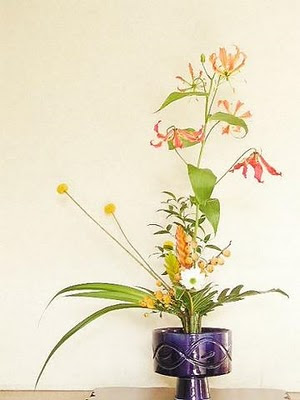:::::::::::::::::::::::::::::::::::::::::::::::::::::::::::::::::::::::::::::::::::::::::::::::::::::
Indian Summer, koharubi 小春日
***** Location: Japan, worldwide
***** Season: Early winter
***** Category: Season
*****************************
Explanation
koharubiyori 小春日和、
ko rokugatsu 小六月"small June"
koharunagi 小春凪(こはるなぎ)no wind at Indian summer time
koharuzora 小春空(こはるぞら) sky at Indian sumer time
Koharu 小春 means a little spring and biyori (hiyori 日和) a fine day any time of the year, literally meaning the sun is at peace. This word has a very gentle ring to the Japanese.
We can add the suffix "biyori" at many other words, like a fine day for an excursion "ensokubiyori" 遠足日和.
According to the Asian Lunar calendar, this was October, but now it is November, when we have a stroke of fine days with bright sunshine.
A warm day in winter, feeling like the coming spring, is quite common, especially after the New Year.
We also have
fuyu atataka 冬暖か (ふゆあたたか) winter is warm
..... fuyu nukushi 冬ぬくし(ふゆぬくし)
toodan 冬暖(とうだん) warm winter
..... dantoo 暖冬(だんとう)
. Winter, the season (fuyu)

CLICK for more photos !
*****************************
Worldwide use
Why INDIAN ?
The first reference that we have is from a book with the title A Snow Storm as it affects the American Farmer, which was written by a French-American farmer named J H St John de Crèvecoeur in about 1777. In it he said “Then a severe frost succeeds which prepares it to receive the voluminous coat of snow which is soon to follow; though it is often preceded by a short interval of smoke and mildness, called the Indian Summer”.
There are several explanations for where the phrase came from, mostly put forward in the early nineteenth century, which suggested the term was of sufficient antiquity by then that its origin had gone out of living memory. William and Mary Morris suggest it came about because the word “Indian” had been adopted as a term among early colonists to describe something false, or a poor imitation of the real thing, as in Indian corn or Indian tea.
Whatever the reason, this name for a short period of fine weather at the end of autumn is now the standard term, even in Britain, where older names such as St Luke’s summer, St Martin’s summer or All-Hallown Summer are now obsolete or rare.
© www.worldwidewords.org. /Michael Quinion
:::::::::::::::::::::::::::::::::::::::::::::::::::::::::::::::::::::::::::::::::::::::::::::::::::::

Indian summer
"spell of warm weather after the first frost," first recorded 1778, Amer.Eng., perhaps so called because it was first noted in regions inhabited by Indians, or because the Indians first described it to the Europeans. No evidence connects it with the color of fall leaves or a season of Indian attacks on settlements. It is the Amer.Eng. version of British All-Hallows summer, Fr. été de la Saint-Martin (feast day Nov. 11), etc. Also colloquial was St. Luke's summer (or little summer), period of warm weather occurring about St. Luke's day (Oct. 18).
© www.etymonline.com
..................................
The term Indian summer has been used for more than two centuries.
The earliest known use was by French American writer St. John de Crevecoeur in rural New York in 1778. There are several theories as to its etymology:
* It may be so named because this was the traditional period during which early North Americans First Nations/Native American harvested their fall crops.
* It may be of Asian Indian origin rather than North American Indian. H. E. Ware, an English writer, noted that ships traversing the Indian Ocean loaded their cargo most often during the Indian summer, or fair weather season. Several ships actually had an "I.S." on their hull at the load level thought safe during Indian summer.
© More in the WIKIPEDIA !
:::::::::::::::::::::::::::::::::::::::::::::::::::::::::::::::::::::::::::::::::::::::::::::::::::::
Germany

In German, the Indian summer is called "Altweibersommer", which is a slightly less polite way of saying "old ladies' summer". Interesting though that it should be almost the same in Hungarian, which is a very different language!
We had a few days of Indian summer here in Europe -- October has been a somewhat more "summery" month than anything we have had since the end of April! I exaggerate but infinitely slightly...
Indian summer --
settling to smoke and drink
on the doorstep
(2006)
Indian summer --
walking down the sunny side
of the street
(2007)
Isabelle Prondzynski, October 2007
:::::::::::::::::::::::::::::::::::::::::::::::::::::::::::::::::::::::::::::::::::::::::::::::::::::
Hungary
falling leaves sound
invite to meditation
old ladies' summer
hulló falevelek hangja
meditálásra késztet
vénasszonyok nyara
In Hungarian, the equivalent to the USA "Indian Summer" is the idiom translated "old ladies' summer", vénasszonyok nyara. In this poem it is the last line in the English version and the Hungarian version.
© Julianna Kádár
:::::::::::::::::::::::::::::::::::::::::::::::::::::::::::::::::::::::::::::::::::::::::::::::::::::
Russia
"Women's summer" (bahbia leto)
*****************************
Things found on the way
*****************************
HAIKU
古家のゆがみを直す小春かな
furu-ie no yugami o naosu koharu kana
he repairs the slant
of my old home
during a warm spell in early winter . . .
The cut marker KANA is at the end of line 3.
Buson talks about a carpenter, who had come to repair his home before the winter starts. Since it is a warm day, he works leisurely and we can almost hear the sound of his hammer and saw.
. Yosa Buson 与謝蕪村 in Edo .
:::::::::::::::::::::::::::::::::::::::::::::::::::::::::::::::::::::::::::::::::::::::::::::::::::::::
小春日やお茶のけむりを眺めをり
koharubi ya ocha no kemuri o nagame-ori
indian summer afternoon -
watching the steam rise
from hot green tea
Etsuko Yanagibori
(Tr. Gabi Greve)
http://groups.yahoo.com/group/cherrypoetryclub/message/20609
:::::::::::::::::::::::::::::::::::::::::::::::::::::::::::::::::::::::::::::::::::::::::::::::::::::::
Indian summer –
the rattle of cornstalks
in a windy field
Indian summer -
earth-scented breeze strokes
my daughter’s hair
Indian summer –
all the windows on the street
open
Indian summer –
a new bird
at my window
Indian summer –
overhead an airplane
rocks its wings three times
Zhanna Rader
xxxxxxxxxxxxxxxxxxxxxxxxxxxx
indian summer--
in the patches of sunlight
schoolgirls bundle up
Angèle Lux
xxxxxxxxxxxxxxxxxxxxxxxxxxxx
Indian summer --
balcony spider weaves
between the rails
Isabelle Prondzynski, 2005
:::::::::::::::::::::::::::::::::::::::::::::::::::::::::::::::::::::::::::::::::::::::::::::::::::::
Indian summer
the acupuncturist brings his cactus
back outside
From my new book “the canary funeral”
- Shared by Alan Pizzarelli -
Joys of Japan, 2012
*****************************
Related words
***** Goose summer
In the days of Middle English, a period of mild weather in late autumn or early winter was sometimes called a "gossomer," literally "goose summer." People may have chosen that name for a late-season warm spell because October and November were the months when people felt that geese were at their best for eating.
"Gossomer" was also used in Middle English as a word for filmy cobwebs floating through the air in calm clear weather, apparently because somebody thought the webs looked like the down of a goose. This sense eventually inspired the adjective "gossamer," which means "light, delicate, or tenuous" - just like cobwebs or goose down.
goose summer--
many colors fill
forest and field
"chibi" (pen-name for Dennis M. Holmes)
Ocotober 2007

Origin:
Gossomer, gossummer, gosesomer, gosamer, gossamer, perh. For goose summer, from its downy appearance, or perh. For God's summer, cf. G. Mariengarr gossamer, properly Mary's yarn, in allusion to the Virgin Mary. Perhaps the E. Word alluded to a legend that the gossamer was the remnant of the Virgin Mary's winding sheet, which dropped from her when she was taken up to heaven.
For the use of summer in the sense of film or threads, cf. G. Maedchensommer, Altweibersommer, fliegender Sommer, all meaning, gossamer.
Source: Websters Dictionary
:::::::::::::::::::::::::::::::::::::::::::::::::::::::::::::::::::::::::::::::::::::::::::::::::::::
. . . . WINTER - - the complete SAIJIKI
:::::::::::::::::::::::::::::::::::::::::::::::::::::::::::::::::::::::::::::::::::::::::::::::::::::::
[ . BACK to DARUMA MUSEUM TOP . ]
[ . BACK to WORLDKIGO . TOP . ]
:::::::::::::::::::::::::::::::::::::::::::::::::::::::::::::::::::::::::::::::::::::::::::::::::::::::
































